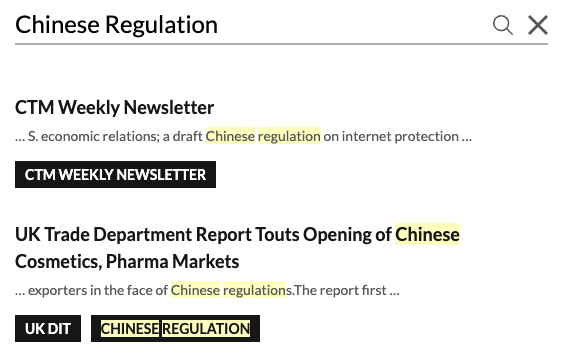On July 13, the U.S. Federal Communications Commission (FCC) adopted an order that updates the rules on reimbursing telecoms companies for the cost of removing, replacing, and disposing of communications equipment that "poses an unacceptable risk to national security." The target of this action is equipment from Chinese companies Huawei and ZTE that is used in smaller communications networks. Congress previously appropriated $1.895 billion for this purpose.
This order in the matter of “Protecting Against National Security Threats to the Communications Supply Chain Through FCC Programs” is an update on a 2020 FCC order, which established the “Secure and Trusted Communications Networks Reimbursement Program to subsidize smaller carriers to remove and replace covered equipment [from Huawei, ZTE, or their subsidiaries, parents, or affiliates].” The July 13 order makes several changes to the existing FCC program, including covering more communications networks (the eligibility cap for participation in the Reimbursement Program was increased from providers serving two million or fewer customers to those with 10 million or fewer customers); and establishing June 30, 2020 as the new date by which covered communications equipment and services must have been obtained to be eligible for Reimbursement Program funds.
These FCC orders build on findings issued in June of 2020 that both Huawei and ZTE pose a national security threat "to the integrity of [U.S.] communications networks and the communications supply chain." In the case of Huawei, the FCC found that Huawei is "highly susceptible to influence and coercion by the Chinese government, military, and intelligence community"; and that Huawei’s equipment "contains known security risks and vulnerabilities." For ZTE, it found that ZTE has close ties to the Chinese government, disregards U.S. national security laws, and its equipment has known cybersecurity risks and vulnerabilities. The FCC Chairman at the time said: "With today’s Orders, and based on the overwhelming weight of evidence, the Bureau has designated Huawei and ZTE as national security risks to America’s communications networks—and to our 5G future.”
Pursuant to the June 2020 action, money from the FCC’s $8.3 billion per year Universal Service Fund -- which tries to extend communications networks to people not currently served -- would no longer be used to purchase, obtain, maintain, improve, modify, or otherwise support any equipment or services produced or provided by Huawei or ZTE. The July 13 order expands on this policy by moving forward with a program to tear up Huawei and ZTE equipment that has already been installed.
As part of the July 13 order, two FCC Commissioners, Acting Chairwoman Rosenworcel and Commissioner Starks, issued separate statements that explain the purpose and nature of the order. Both emphasized the importance of "trust" in relation to the equipment used in communications networks. Rosenworcel's statement provides a helpful explanation of the background here.
According to Rosenworcel, "there is a serious risk that [Huawei and ZTE] equipment may be manipulated, disrupted, or controlled by foreign actors. Its presence threatens the very trust we require in our communications systems." As a result, Congress legislated to remove this equipment from the U.S. communications networks, creating the program under which the FCC is now acting to "rebuild and secure" these networks nationwide. Under this program, the FCC "will evaluate network after network, base station after base station, and router after router until we have rooted out equipment that could undermine our national security." Commissioner Rosenworcel saw this program as setting an example that would "demonstrate for the world how to build a more secure future for 5G networks."
Commissioner Rosenworcel stated that October 29 is now the "target date for opening the filing window for the Reimbursement Program," which, she said, "means carriers can start planning for their applications and their new networks." What the FCC hopes to see come out of this is the following: "We want companies cutting out high-risk hardware from their networks to have the opportunity to use trusted alternatives, including traditional end-to-end proprietary gear as well as promising newer alternatives, like interoperable open radio access network solutions, or open RAN."
Back in 2019, the FCC adopted a Supply Chain Report and Order, which prohibits the use of government funds (through the Universal Service Fund) to purchase telecom equipment and services from certain companies, potentially targeting Chinese tech companies Huawei and ZTE. (The FCC later finalized, through the June 2020 action, its decision that the targeted companies include Huawei, ZTE, and their subsidiaries, parents, or affiliates.) At the same time, the FCC proposed the establishment of a program to reimburse costs incurred during the process of removing or replacing existing equipment and services. This FCC order also included an initiative to assess the cost of removing and replacing existing telecom equipment and services, which was later estimated at $1.837 billion.
The statutory basis for the Reimbursement Program is the Secure Networks Act (SNA) passed in 2020, later amended by the Consolidated Appropriations Act (CAA), 2021. In addition to revising some of the rules in the SNA, the CAA also appropriated $1.895 billion for the Reimbursement Program. The order adopted on July 13 is an effort to implement these laws and incorporate the amendments made in the CAA.

